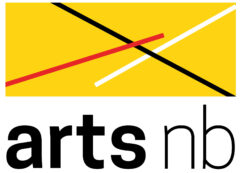Tips on Writing & Formatting a Professional Artist CV
How to Approach the CV
Think of the Artist CV (Curriculum Vitae) as a brief record of your artistic activity and achievements. It is a curated summary of your experience as a professional artist and writing an effective CV is a lot like curating an exhibition. You don’t want to clutter the walls with every painting you’ve ever done since the 5th grade. Instead, include your most relevant and strongest work to create a cohesive snapshot of who you are as an artist. Be clear and concise and pay attention to details such as formatting. This is what makes the difference between a sloppy and a professional CV.
Update your CV regularly to maintain an accurate record of your artistic activity and so that your CV is always ready when opportunities arise. The CV is most often used when applying for funding and professional or gallery representation, and when applying to participate in residencies, exhibitions, and performances/productions.
CV Writing
Follow these simple rules for form and style for best results:
- Writing Style: Short, succinct word choice
- Paper size: 8 ½’”x 11”
- Margins: 1-1” ½”
- Grammar: parallel, consistent endings (example: practice, exhibit, perform)
- Typo free
- Font: 10-12 point
- Black ink, legible font (Times New Roman or Arial are common)
- Name and page number on each page (no page number necessary on first page)
- Reverse chronological order
- Common Sections: Personal Information, Arts Education, Professional Experience, Exhibitions, Publications/Recordings, Performances, Productions, Residencies, Collections, Teaching Experience, Grants/Awards
- 1-4 pages in length
Formatting Information
- Place your contact information at the top of the CV, including name, address, phone number, email, website and professional social media (if applicable) :

- In general, list information in reverse chronological order from the most recent to the least recent.
- Group similar information – i.e. have specific sections dedicated to education, exhibitions, performances, workshops, publications and awards etc.
- Differentiate between headings and sub-headings by using bold, indentation, capitalization, underlines or italicization. Remain consistent in treatment of headings.
- If you are an artist with a lot of experience, focus on major milestones and achievements, such as awards, publications and exhibitions or performances in renowned venues. In this case, it can be a good idea to put “Selected” in your headings, such as: Selected Publications.
- Include only information that is relevant to the arts – for example, do not include a nursing degree.
- Including dates for events provides more clarity as to the trajectory of your artistic career.
- Pay attention to alignment in various sections to maintain a clean look and legibility.
- If you do not have a formal arts education from an institution, you do not necessarily need to include an education section, but you can include workshops or relevant informal training, such as mentorships.
- You can include a bibliography section if desired, listing articles, essays, reviews etc. in which your art has been featured. This can include any format, such as web, television and radio. Reference MLA style formatting for bibliographies.
- If you are a member of any professional arts affiliations or organizations, this is a great thing to list to show your dedication to the sector.
- If there are galleries or public collections that include your work, list the organization and the location in a Collections section. If your work is included in private collections, list the location. For example: My work is included in private collections in Canada, the United States, China, and across Europe.
- Chronologically is not the only way to display information. You can also organize information more specifically to display the diversity of your experience, such as by theme (for instance: solo exhibitions, group exhibitions).
Example 1: Theatre Artist CV Organized by Role
PROFESSIONAL EXPERIENCE
Director
2016 Title of Play, Writer of Play, Theatre, Location
2015 Title of Play, Writer of Play, Theatre, Location
Actor
2016 Title of Play, Role, Writer of Play, Director, Theatre, Location
2013 Title of Play, Role, Writer of Play, Director, Theatre, Location
Dramaturge
2015 Title of Play, Writer of Play, Theatre
Playwright
2012 Title of Play
Example 2: Theatre Artist CV Organized by Medium
PROFESSIONAL EXPERIENCE
Stage
2015 Title of Play, Role, Writer of Play, Director, Theatre, Location
2012 Title of Play, Writer of Play, Role in Production, Theatre, Location
Television
2016 Title of TV Show, Role in Production, Network/Producer
2010 Title of TV Show, Role in Production, Network/Producer
Film
2008 Title of Film, Role in Production, Director
Any questions ?
If you have further questions regarding CVs, please contact the New Brunswick Arts Board at 506.444.4444, or send us an email.

